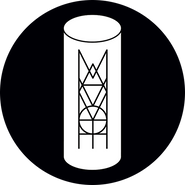As the name suggests, sour beers are beers that are made to taste sour. This sourness can range from a slight tartness right the way up to a mouth-puckering, ulcer inducing acidity. Sours generally fall into one of two categories. There is a “clean” sour, normally made by introducing a single strain of lactobacillus (commonly used to make yoghurt from milk) to wort, which eats sugar and creates lactic acid. The other variety of sour is called a lambic sour, which is the equivalent of a sourdough bread but for sour beer; the wort is fermented with whatever microbes happen to fall into the wort whilst it’s being produced and fermented. This process makes much more wild, often wonderful, and unpredictable results, but this a much bigger subject for another blog post, another time.
The way we produced Twist was with the former process, using a method known as kettle souring. We start by producing a beer in the normal way; mashing the malt to extract sugars, filling the kettle with the sweet wort ready to boil and add hops. At this point however, we only boil the wort for a short amount of time rather than the customary 60 minutes. This is to sterilise the wort and make sure no other microbe is going to have a hand in fermenting our sugar. Once the wort is sterile, it is then circulated through our heat exchanger to cool it down, going back into the kettle until the entire amount of liquid is homogenised at around 40°C. This is the optimum temperature for lactobacillus to do its work.
The kettle is then bubbled with co2 to remove as much oxygen as possible: the majority of airborne microbes are aerobic (need oxygen to thrive) so by removing the oxygen, the chance of the wort being soured with an alien-airborne bacteria or wild yeast is greatly reduced. At this point, our lactobacillus is introduced into the wort. If you’re wondering, it has been grown in a laboratory for this purpose, and sent to us as a thin brown liquid.
Then...we wait! Usually within 24 hours the lactobacillus has awoken, and eaten enough sugar to create enough lactic acid to create a desirable amount of sourness. The sourness is monitored by pH, taste, and titration (again, another post for another time). Once the sourness is at the desired level, the now tangy yet still sweet wort is heated and boiled once again. The lactobacillus that we relied on to create our sourness is unceremoniously killed in the boil, allowing us to ferment the beer as per any other beer in a fermenting vessel with normal brewing yeast.
It’s for this reason that producing sour beer in this way is so enjoyable; it’s relatively quick, and allows the brewer a high degree of control. And of course, using a single controlled strain of bacteria gives the beer its clean flavour, meaning there’s a very limited chance of nasty flavours and smells which could ruin the beer.

